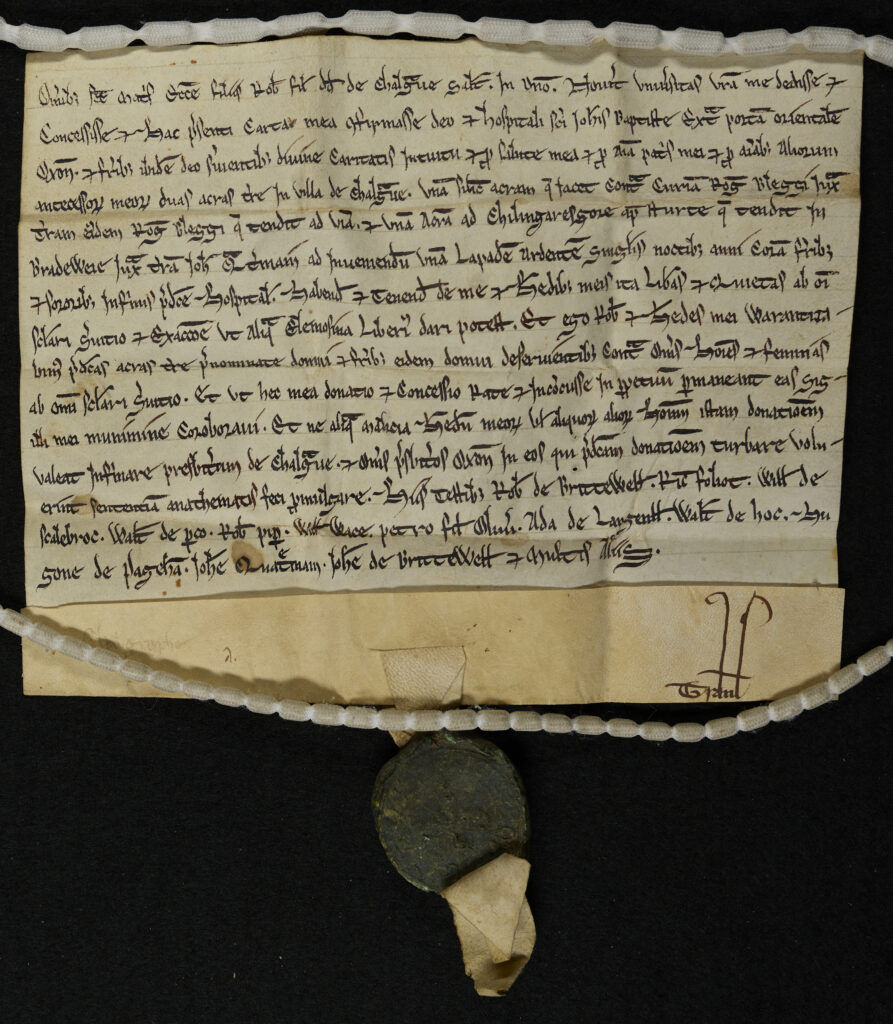
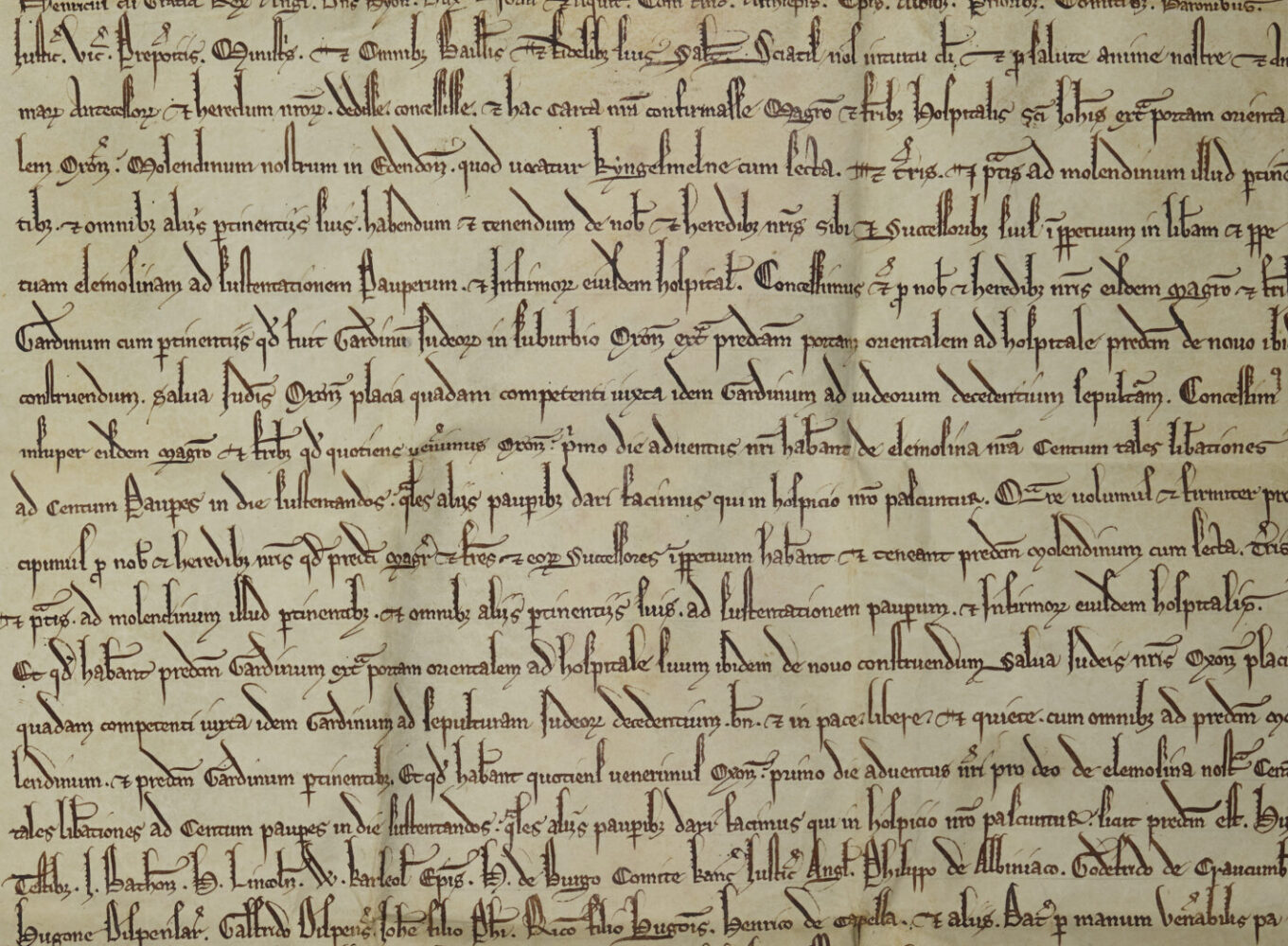

Magdalen College was founded in 1458 by William Waynflete, bishop of Winchester (1447–86). It therefore did not exist when medieval Europe’s deadliest pandemic, the Black Death, arrived on England’s shores in the mid 14th century.
The college nevertheless has links to an institution that would have almost certainly been overwhelmed with the infected when the plague reached Oxford in November 1348.
Magdalen occupies a site that was once home to the Hospital of St John the Baptist, a religious foundation that offered shelter to the elderly and sick-poor. Its records now form part of the college Archives. None refer to the ‘great pestilence’, as contemporaries called the Black Death, but they nonetheless shed light on the workings of this early medical institution.
Magdalen not only inherited the Hospital’s lands and buildings, but also initially preserved part of its mission of care. This it carried out by maintaining a refuge for the sick-poor in the undercroft of the Hospital’s chapel. In 1596, this chamber was judged damp and unwholesome in winter, and was consequently repurposed. The chapel, which stood roughly on the site of today’s lodge, was pulled down in 1665. Repurposed basement spaces, which may have served as the refuge, can still be found underneath this part of the college.
William Waynflete also appropriated for Magdalen other hospitals outside Oxford. A document from one at Brackley (Northants) contains a reference to deaths ‘during the first pestilence’, perhaps an allusion to the cattle pestilence and famine that swept through England in 1315–17.


Care for the Sick-Poor
In this early 13th-century charter, Robert, son of David, gives land in Chalgrove (Oxon) to the Hospital of St John the Baptist, revenues from which were to be used for the ‘burning of a lamp’ (unam la[m]padem ardentem) before the sick brethren and sisters.
Magdalen College Archives, Chalgrove 17B
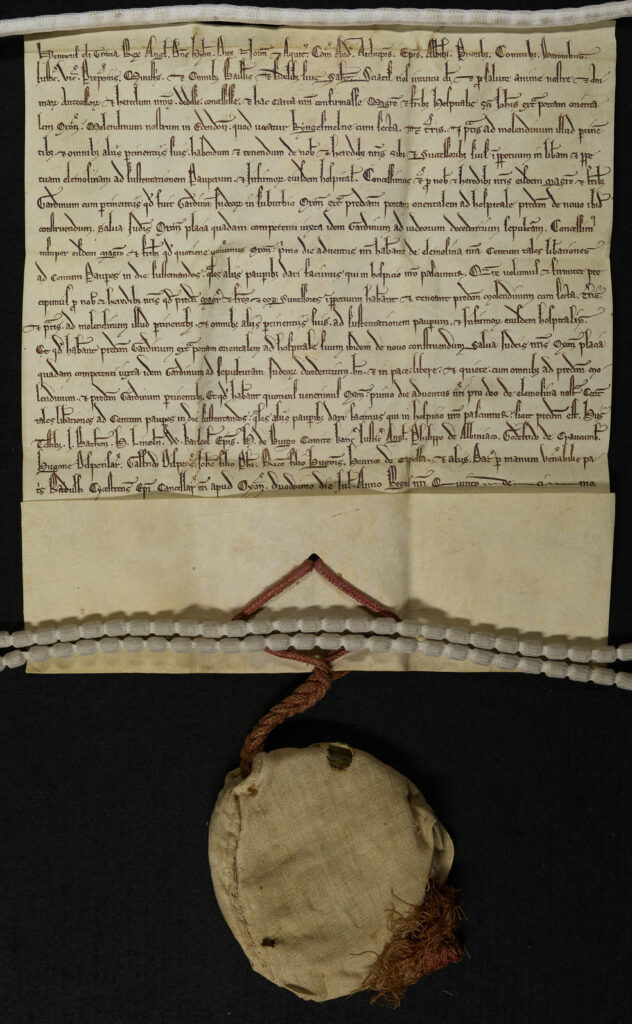

A Royal Benefactor
By this charter of 12 July 1231, Henry III, king of England (1216–72), grants to the Hospital of St John the Baptist mills in Oxford and a garden (gardinum) belonging to the city’s Jews. In 1234, the king gave to the Hospital new buildings and lands, where Magdalen College now stands.
Magdalen College Archives, Chartae Regiae 8
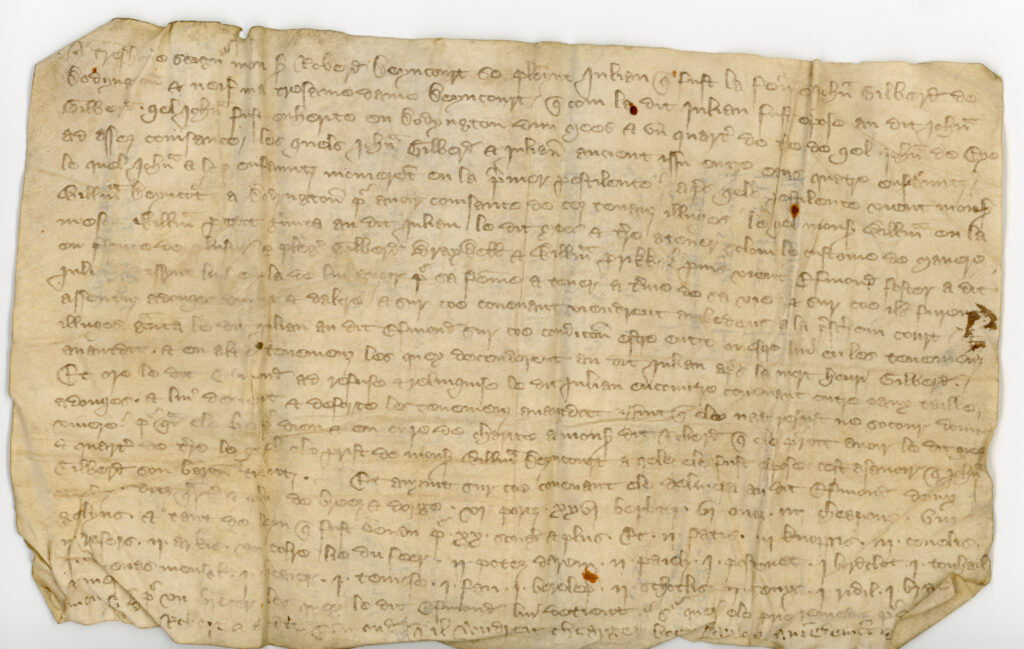

Plaint
This plaint, in French, dates from c.1300–20. It records in its fifth line how John Gilbert of Doddington (Northants) died with his children ‘en la premer pestilence’ (‘in the first pestilence’), which is perhaps an allusion to the famine and pestilence of 1315–17.
Magdalen College Archives, Brackley C99
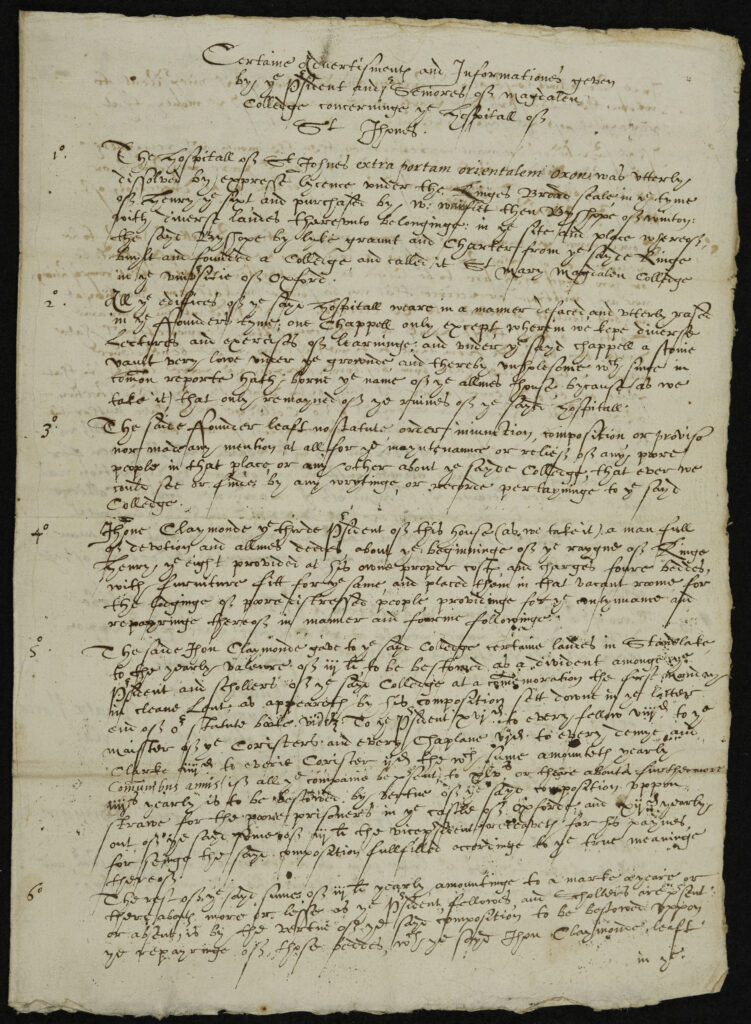

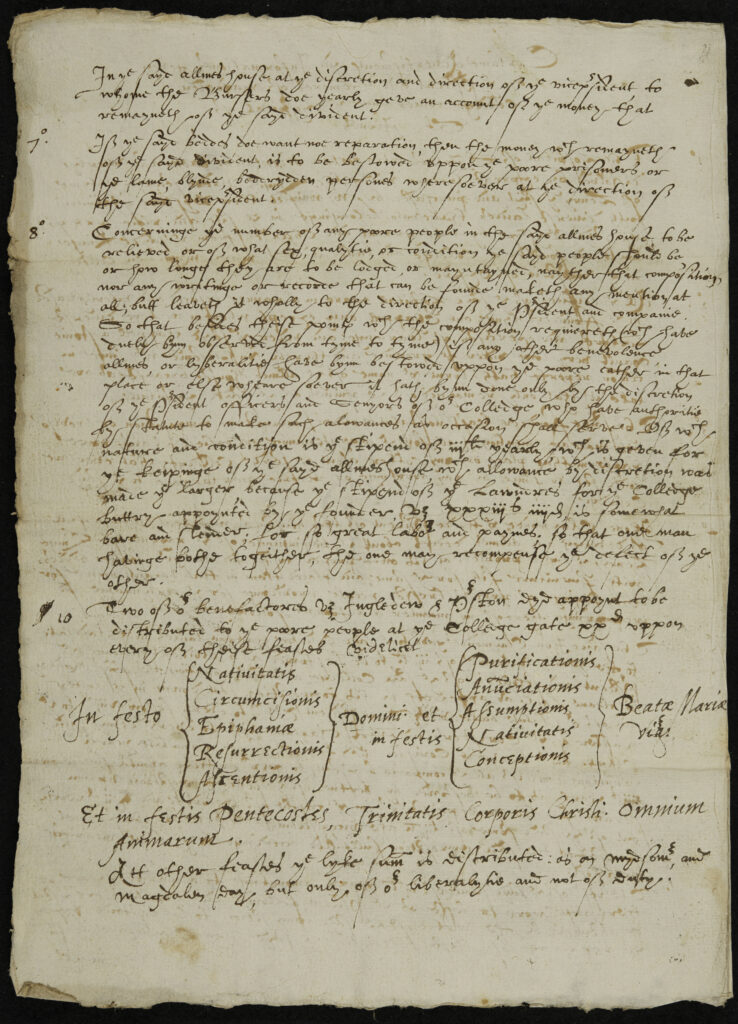
Magdalen Alms-House
In 1596, the President and Fellows of Magdalen compiled a report on the Hospital of St John the Baptist, in which they noted (paragraph 2) the existence under the hospital’s chapel of a ‘tonic vault very lowe under the grounde’, commonly known as ‘the allmes house’. A benefaction from John Claymond (P 1507–16) provided for this alms-house to serve as a refuge for the sick-poor. By the Civil War, however, it had been converted for use as a fuel store.
Magdalen College Archives, Misc. 375(iii)
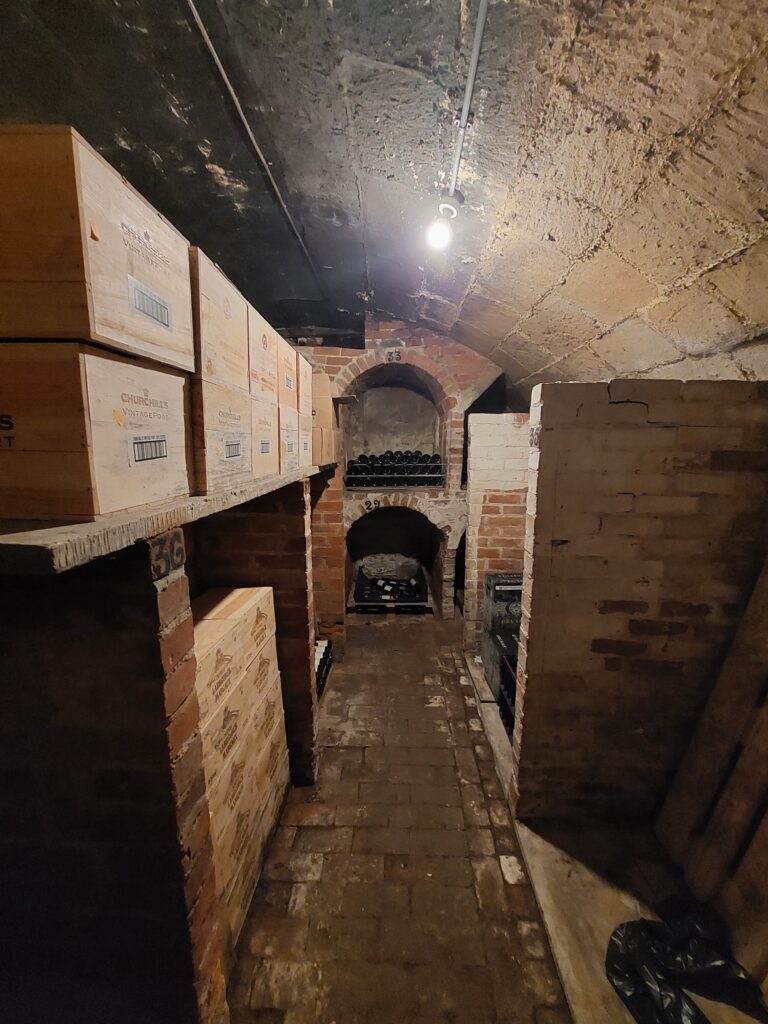

Basement Space
This wine cellar, now under the building to the rear of the Porters’ Lodge, may occupy the space once home to Magdalen’s refuge for the sick-poor, closed in 1596.
Photograph © Dr Richard Allen
Stella cæli extirpavit (Chant in Time of Pestilence)
In medieval and early modern Europe, people turned to prayer during times of plague. One way of calling on God was through music.
In 1487–9, Magdalen purchased two tablets containing the notes of a song called Stella cæli extirpavit, a Marian invocation used as a plea for deliverance from illness.
In the late 15th and early 16th centuries, this song was performed for the college after Compline on Saturday and at vigils of the Virgin specified in the statutes.
Listen to Magdalen’s choristers perform the plainsong setting of this hymn in the video above.
With thanks to Mr Mark Williams, Informator Choristarum and Tutorial Fellow, and the choir of Magdalen College